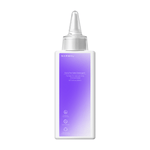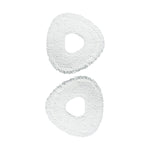Robot vacuums can kill spiders, but survival depends on the spider’s size and your vacuum’s suction power. Most small spiders die instantly when sucked up, while larger ones may survive briefly inside the dustbin.
This guide explains what happens after vacuuming a spider, how to stop it from escaping, and why it’s important to empty your vacuum promptly—especially if eggs are involved.We also cover whether robot vacuums are effective for spider webs, how Narwal models handle pests, and which features help trap bugs safely. If you're in Australia, where large spiders like huntsman or redbacks are common, we explain how your vacuum might perform differently. Finally, we outline simple strategies to prevent spiders from returning, including sealing entry points and regular cleaning.
Whether you're looking to deal with one spider or reduce pests long-term, this article will show how robot vacuums—especially Narwal’s—can help maintain a cleaner, safer home.
Can Spiders Survive Robot Vacuums? Here's What Happens
Most spiders are killed when sucked into a robot vacuum, but larger ones might survive briefly inside the dustbin.
When you vacuum a spider, especially with a robot vacuum, it's pulled through a powerful airflow into the dustbin or bag. This sudden force can cause trauma, especially for smaller spiders whose fragile bodies may be crushed during the process. Larger spiders with thicker exoskeletons might survive the suction and end up alive inside the dustbin.
Even if a spider survives the initial vacuuming, its chances of long-term survival are low. Inside the dustbin, it lacks food, water, and fresh air. The debris and dust particles can injure or suffocate it. Most spiders will eventually die unless the bin is emptied promptly and the spider manages to escape—which is unlikely with Narwal’s sealed design.
So yes, robot vacuums can kill spiders, but survival is technically possible under specific conditions.
What to Do After Vacuuming a Spider?
Once you’ve vacuumed up a spider, there are a few steps you can take to ensure it doesn’t come back into your home. Firstly, ensure that the vacuum's dustbin is emptied or the bag is replaced promptly after usage. Doing this outdoors ensures that if the spider has survived, it won’t escape inside your home. Additionally, emptying the vacuum promptly helps prevent the possibility of spider eggs hatching inside your vacuum, which could lead to more spider infestations later on.
If you want to be absolutely certain that the spider is dead, you can dispose of the dustbin contents into a sealed plastic bag before discarding it in an outdoor trash can. This will prevent any lingering pests from escaping and re-entering your home.

Can a Spider Come Back Out of a Vacuum?
Though it is unlikely, there is a small possibility that a spider could crawl out of a vacuum if it has survived the suction. This is especially true if your vacuum model has gaps or vents through which a spider could escape. Most modern vacuums, however, are designed to trap debris—and any unwanted pests—securely inside the dustbin or bag.
Robot vacuums, like Narwal models, are generally even less likely to allow a spider to escape because they have sealed compartments for dust collection. Some vacuums feature self-emptying capabilities, which can further reduce the risk of a spider escaping, as the system is designed to contain and automatically dispose of the vacuumed debris.
Are Australian Spiders a Problem for Robot Vacuums?
In Australia, many households deal with larger spiders like huntsman or redbacks. While robot vacuums can suck them in, heavier spiders may survive longer inside the bin. To prevent them from crawling back out, always empty the dustbin outdoors. Narwal’s sealed design helps reduce escape risks.
What Happens if I Vacuum Up Spider Eggs?
Vacuuming up spider eggs can be effective, but there are precautions you should take to ensure that no eggs survive the process. While the force of the vacuum may damage or destroy some egg sacs, it is still possible for others to remain intact. If the egg sac remains undisturbed, it could eventually hatch inside the vacuum, leading to a potential spider infestation in your vacuum cleaner.
To prevent this, always empty the dustbin or bag immediately after vacuuming an area where spider eggs may be present. It’s a good idea to check the vacuum hose and any attachments as well, as eggs or egg sacs could potentially stick to the surfaces.
Is It Bad to Vacuum Spider Webs?
Vacuuming spider webs is an excellent way to eliminate both the visible sign of spiders and reduce the chances of new spiders taking up residence in your home. Spiders often use old webs as a starting point to build new ones, so removing webs can disrupt their habitat. Additionally, by vacuuming up the webs, you’re removing potential food sources for spiders, which can help discourage them from returning.
Regularly vacuuming webs, especially in high-risk areas such as corners, ceilings, and the vicinities of windows and doors, helps maintain a spider-web-free home and decreases the chances of future infestations.
How Can Narwal Robot Vacuum Cleaners Control Pests?

Narwal robot vacuum cleaners, like the Freo Z Ultra and S20 Pro, come with advanced features that make them highly effective at controlling pests, such as spiders and other small insects. With 12,000Pa suction power in the Freo Z Ultra, even tiny pests are easily captured and disposed of, reducing the chance of infestations. The S20 Pro offers similar suction strength, ensuring that both wet and dry messes, including pests and debris, are handled effortlessly in one pass.
Narwal’s innovative self-emptying and self-cleaning features make it easy to manage debris, including pests and their eggs, without ever needing to come in direct contact. The Freo Z Ultra’s AI-powered station and automatic water exchange system also contribute to a cleaner, more hygienic environment, further discouraging pests from returning.
The Freo Z Ultra uses dual 136° RGB cameras and LiDAR navigation, allowing it to access hard-to-reach areas like under furniture, where spiders often hide. The robot can clean these spaces more efficiently than traditional methods, removing webs and potential hiding spots. For homes with varied floor types, both models adjust seamlessly, delivering a comprehensive clean on hardwood, tile, and carpet.
[cta:narwal-freo-z-ultra-robotic-vacuum-and-mop-cleaner-clean-before-you-even-notice]
With the HEPA filtration in both the Freo Z Ultra and S20 Pro, allergens, dust, and small particles—including pest remains—are trapped, contributing to a healthier home environment that is less appealing to pests.
Why Choose Freo Z Ultra or S20 Pro for Pest Control?
Powerful Suction: Both models have powerful suction power, 12000Pa for the Freo Z Ultra and 20000Pa for the S20 Pro, ensuring thorough removal of pests and debris.
Intelligent Navigation: AI-driven obstacle avoidance helps these vacuums navigate cluttered spaces and target hidden dirt where pests may reside.
Versatility: Both vacuums offer wet and dry cleaning options, making them ideal for comprehensive home care.
Incorporating the Narwal Freo Z Ultra or S20 Pro into your home cleaning routine not only keeps your home spotless but also helps in reducing pest problems by removing their hiding spots, webs, and potential allergens that attract them.
[cta:narwal-s20-pro-vacuum-mop]
How to Permanently Get Rid of Spiders?
While vacuuming is an effective temporary solution, permanent spider removal requires a combination of strategies. Here are some long-term methods to keep spiders out of your home:
Seal Entry Points
Spiders gain access to homes through cracks and gaps in doors, windows, and walls. To prevent their entry, seal these openings with caulk or weather stripping.
Reduce Clutter
Spiders love cluttered areas because they provide dark, undisturbed places to hide. Keeping your home tidy and free from piles of clothes, papers, or boxes can discourage spiders from making a home indoors.
Use Essential Oils
Certain strong scents, such as peppermint, eucalyptus, and tea tree oil, are disliked by spiders. You can make a natural spider repellent by blending these essential oils with water and spraying it around windows, door frames, and other potential entry points.
Regular Cleaning
Routine vacuuming, especially with a Narwal robot vacuum, can remove webs, eggs, and other debris that might attract spiders. Keeping your home free of dust and crumbs can also reduce the number of insects that spiders prey on, making your home less appealing to them.
Maintain a Dry Environment
Moist environments are conducive to the growth of spiders and their prey. To discourage them, ensure your home is well-ventilated, repair any leaky pipes, and utilize a dehumidifier in damp areas such as basements.

Does vacuuming reduce spiders?
Yes, vacuuming can reduce the number of spiders in your home by removing them directly, along with their webs and eggs. However, regular cleaning and prevention are key to keeping them from coming back.
Does vacuuming keep bugs away?
Vacuuming helps reduce the presence of various bugs by removing food particles, dust, and debris that attract insects. Regular cleaning disrupts pest habitats, reducing the likelihood of bugs and their predators, like spiders, thriving in your home.
Are robot vacuums safe for homes with pets and spiders?
Yes, Narwal’s robot vacuums are safe for homes with pets and can handle spiders and bugs without spreading allergens, thanks to HEPA filtration and sealed bins.
Conclusion
While robot vacuum cleaners like those from Narwal are effective tools in controlling pests, including spiders, they are not a standalone solution for spider infestations. While vacuuming can assist in removing spiders, webs, and eggs, achieving long-term pest control necessitates a blend of preventative measures and routine cleaning. By integrating a Narwal robot vacuum into your household cleaning arsenal, you can reduce spider populations and maintain a cleaner, healthier living space.




















































